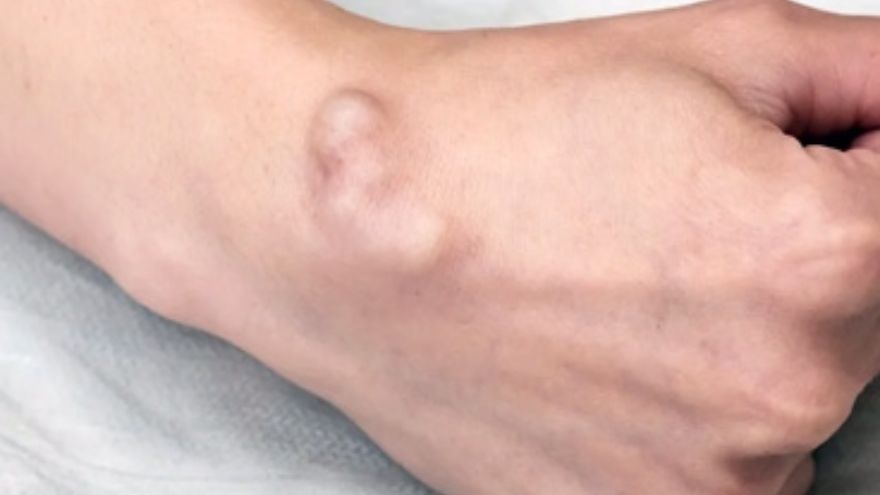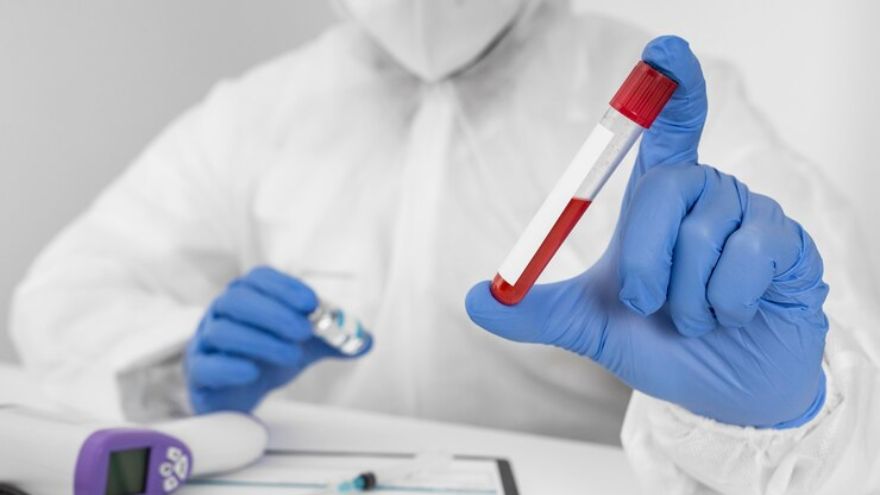
A cyst is a closed sac-like structure, filled with liquid, gaseous, or semisolid material, that can form in any part of the body. Although cysts can occur in various tissues, they are most commonly found in the skin, internal organs, or bones. Cysts can vary in size, from microscopic formations to large masses that can displace organs. While most cysts are not harmful and non-cancerous, some may become infected or indicate more serious underlying health conditions. Let explore the causes, types, symptoms, and treatment options for cysts, as well as preventive measures and when medical intervention is necessary.
What Causes Cysts?
Cysts can form for various reasons, and their causes are often linked to the tissue type where they occur. In many cases, cysts develop due to blockage in the body’s natural drainage systems. Common causes include:
1. Infections: Cysts can form as a result of bacterial, viral, or fungal infections. The immune system's response to the infection may cause a fluid-filled sac to form as part of the healing process.
2. Blockages: Blocked ducts in glands or organs can result in the accumulation of fluids or secretions, leading to cyst formation. For example, sebaceous cysts occur when the sebaceous glands in the skin become blocked.
3. Genetic Conditions: Certain genetic disorders may lead individuals to develop cysts. For instance, polycystic kidney disease (PKD) is a hereditary condition that causes cysts to form in the kidneys.
4. Trauma or Injury: Physical injuries to the body can sometimes trigger the formation of cysts, especially in the skin or joints.
5. Chronic Inflammation: Long-term inflammation in the body can lead to the development of cysts in affected areas.
6. Developmental Abnormalities: During fetal development, some cysts may form as a result of improper cell differentiation or tissue formation.
Types of Cysts
There are many types of cysts, each with unique characteristics and causes. Some of the most common types include:
1. Sebaceous Cysts: These are small, slow-growing cysts that form in the skin’s sebaceous glands. They are usually painless unless infected.
2. Ovarian Cysts: Cysts that develop on or inside a woman's ovaries. They are often a part of the menstrual cycle and may disappear on their own. However, larger cysts may require medical intervention.
3. Breast Cysts: Fluid-filled sacs in the breast, which are common in women and are typically benign. These cysts often vary in size and may change with hormonal fluctuations.
4. Ganglion Cysts: These are lumps that typically form on the hands, wrists, or feet, particularly around joints or tendons. Ganglion cysts are usually benign but can be painful.
5. Baker's Cysts: A type of cyst that forms behind the knee due to the accumulation of joint fluid. These cysts are often related to knee joint conditions like arthritis.
6. Dermoid Cysts: These cysts form from skin and hair cells, and can occur in various parts of the body, including the ovaries, skin, or spine. They may contain hair, skin, or even teeth.
7. Pilar Cysts: Often found on the scalp, these cysts develop from hair follicles and are typically harmless.
8. Polycystic Ovary Syndrome (PCOS): This condition is characterized by the presence of multiple small ovarian cysts and is associated with hormonal imbalances in women, leading to various symptoms like irregular periods and infertility.
9. Kidney Cysts: Simple kidney cysts are fluid-filled sacs that can form on or inside the kidneys. In contrast, polycystic kidney disease involves numerous cysts that can impair kidney function over time.
10. Mucous Cysts: Typically found in the mouth, these cysts form when salivary glands become blocked or damaged, causing fluid accumulation.
Symptoms of Cysts
The symptoms of cysts depend on their type, size, and location. Small cysts may go unnoticed, but larger cysts can cause discomfort or other noticeable effects. Common symptoms include:
1. Lumps or Swelling: Cysts often appear as lumps beneath the skin, which may be soft, firm, or tender to the touch.
2. Pain: Some cysts, especially those that press on nearby tissues or organs, can cause pain or discomfort. Ovarian cysts, for example, may result in pelvic pain, while ganglion cysts can cause wrist pain.
3. Redness and Warmth: If a cyst becomes infected, the surrounding skin may become red, warm, and painful.
4. Changes in Bowel or Urinary Habits: Cysts in the kidneys or reproductive organs can cause symptoms like difficulty urinating, changes in bowel habits, or menstrual irregularities.
5. Nausea and Vomiting: Larger cysts, especially those in the abdomen, can cause nausea, bloating, or a feeling of fullness.
6. Difficulty Moving: Cysts that form near joints or bones, like ganglion or Baker's cysts, can restrict movement.
Treatment Options for Cysts
Most cysts are mild and do not require treatment. However, if a cyst is causing discomfort, becomes infected, or poses a risk to your health, medical intervention may be necessary. Treatment options include:
1. Observation: In many cases, doctors recommend a “watch-and-wait” approach. Smaller cysts may resolve on their own over time.
2. Aspiration: This involves draining the cyst using a needle. While effective, cysts may recur after aspiration, especially if the underlying cause is not treated.
3. Surgical Removal: If a cyst is large, painful, or potentially harmful, it may need to be surgically removed. This is particularly common for ovarian, dermoid, or sebaceous cysts.
4. Medication: In cases where cysts are caused by infections, antibiotics may be prescribed. Hormonal treatments may also be used for cysts related to hormonal imbalances, such as in PCOS.
5. Home Care: Applying warm compresses can help reduce the pain and swelling of cysts, particularly sebaceous or mucous cysts.
When to Seek Medical Attention
While most cysts are harmless, some require prompt medical attention, especially if they:
- Grow rapidly or are larger than expected.
- Become painful, red, or infected.
- Affect normal body functions, like breathing, urination, or joint movement.
- Are associated with other symptoms like fever or weight loss.
Conclusion
Cysts are common medical conditions that can occur in different parts of the body. Although most cysts are benign, some can cause discomfort or indicate a more serious health issue. Understanding the type, cause, and treatment options for cysts can help you take appropriate action when necessary. If you suspect you have a cyst, it’s important to seek medical advice, particularly if it’s causing pain or changes in your body’s normal functions. With proper care, most cysts can be effectively managed or treated.
Frequently Asked Questions (FAQs) About Cysts.
Q. Are cysts cancerous?
Most cysts are benign (non-cancerous) and not harmful. However, certain cysts can indicate an underlying medical condition or, in rare cases, be cancerous. It's essential to consult a doctor if you notice a new cyst, especially if it grows quickly or changes in appearance.
Q. What causes cysts?
Cysts can form due to a variety of reasons, such as blockages in the body’s drainage systems (e.g., sebaceous glands), infections, trauma, genetic conditions, and even developmental issues. Sometimes, cysts may develop for no apparent reason.
Q. What are the common symptoms of a cyst?
The symptoms of a cyst depend on its size, location, and type. Common symptoms include:
- A lump or swelling under the skin.
- Pain or tenderness in the affected area.
- Redness or warmth if the cyst is infected.
- Restricted movement if the cyst is near a joint.
- Pressure or discomfort if the cyst presses against an organ.
Q. How are cysts diagnosed?
Cysts are often diagnosed during a physical examination. Depending on the cyst's location and size, imaging tests like ultrasounds, CT scans, or MRIs may be used to get a better look. In some cases, a doctor may take a sample of the cyst's contents to analyze if it's infected or cancerous.
Q. Can cysts go away on their own?
Yes, many cysts, especially smaller ones, may resolve on their own without treatment. This is particularly common with cysts like those found on the ovaries, which often disappear as part of the menstrual cycle. However, larger or persistent cysts may require medical intervention.
Q. Are there home remedies for cysts?
For non-serious cysts, applying warm compresses can help alleviate pain and reduce swelling. However, it's important not to attempt draining or puncturing a cyst yourself, as this can lead to infection or other complications. Always consult a healthcare provider before attempting any home remedies.
Q. Can a cyst come back after treatment?
Yes, some cysts may recur, especially if the underlying cause is not addressed. For instance, sebaceous cysts may reappear if the gland remains blocked, and ganglion cysts may come back after aspiration. Surgery can sometimes prevent recurrence by completely removing the cyst and its sac.
Q. What’s the difference between a cyst and a tumor?
A cyst is a sac filled with fluid, gas, or semi-solid material, while a tumor is a solid mass of tissue. Cysts are generally benign, whereas tumors can be benign or cancerous. Both cysts and tumors can sometimes look and feel similar, so it’s important to consult a healthcare provider for an accurate diagnosis.



